🌿 Arched garden trellises are not only aesthetically pleasing but also serve a practical purpose in outdoor spaces. These elegant structures enhance the visual appeal of your garden while providing vital support for climbing plants, ultimately contributing to the creation of a lush and vibrant vertical landscape. 🌼
Arched garden trellises are available in a wide range of materials, shapes, and sizes. This allows you to select the ideal design that perfectly complements your home’s architecture 📐 and enhances the overall aesthetic of your yard. In addition to their decorative appeal, these versatile structures offer various practical advantages. They maximize vertical growing space, create shaded areas, and can even enhance the curb appeal and value of your property. 🌼🏡
✨ In addition to their practical functionality, arched garden trellises also add an element of elegance and romanticism 😍 to garden settings. They can serve as charming entrances or gateways, creating a warm and inviting atmosphere that encourages visitors to explore the hidden treasures of the garden. Whether used as standalone pieces or incorporated into larger landscaping designs, these arched trellises offer a distinctive combination of beauty and functionality, making them a highly sought-after addition to any gardener’s paradise.
- I. Choosing the perfect arched garden trellises: Factors to consider
- II. Popular climbing plants for arched garden trellises
- III. Installing and maintaining your arched garden trellis
- IV. Design inspiration and creative ideas for arched garden trellises
- V. Benefits of arched garden trellises:
- VI. Tips for Building arched garden trellises
- VII. Conclusion: Transform your garden with arched trellis magic
- VIII. FAQs: Arched garden trellises
I. Choosing the perfect arched garden trellises: Factors to consider
1) Material matters:
1.1 Wooden arched garden trellises:
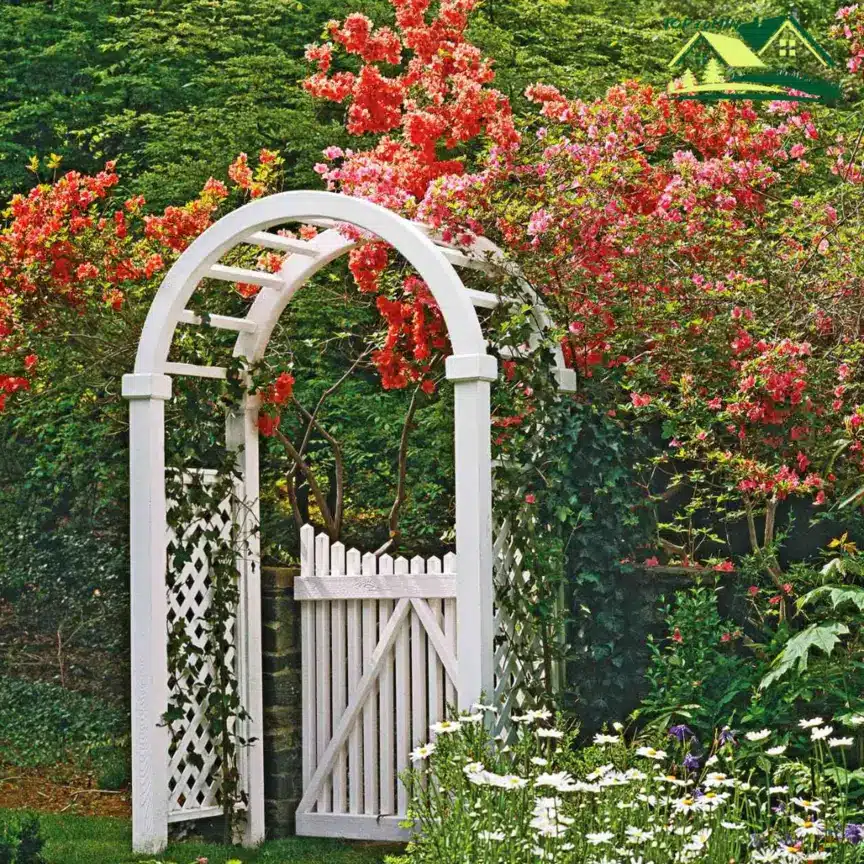
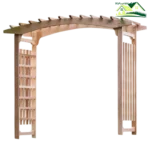
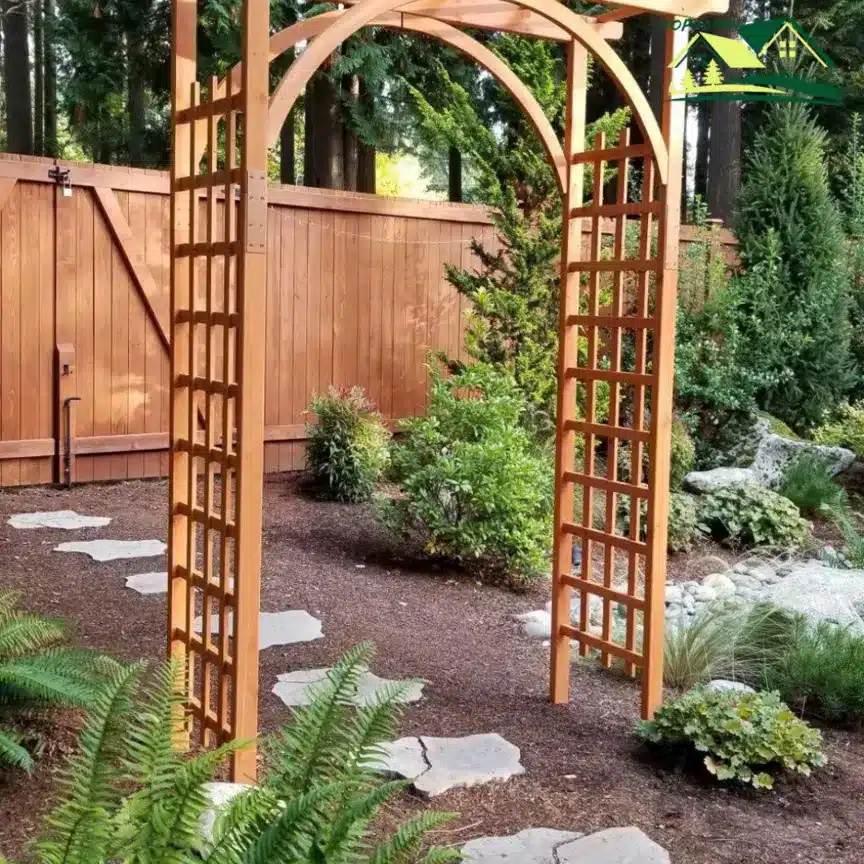
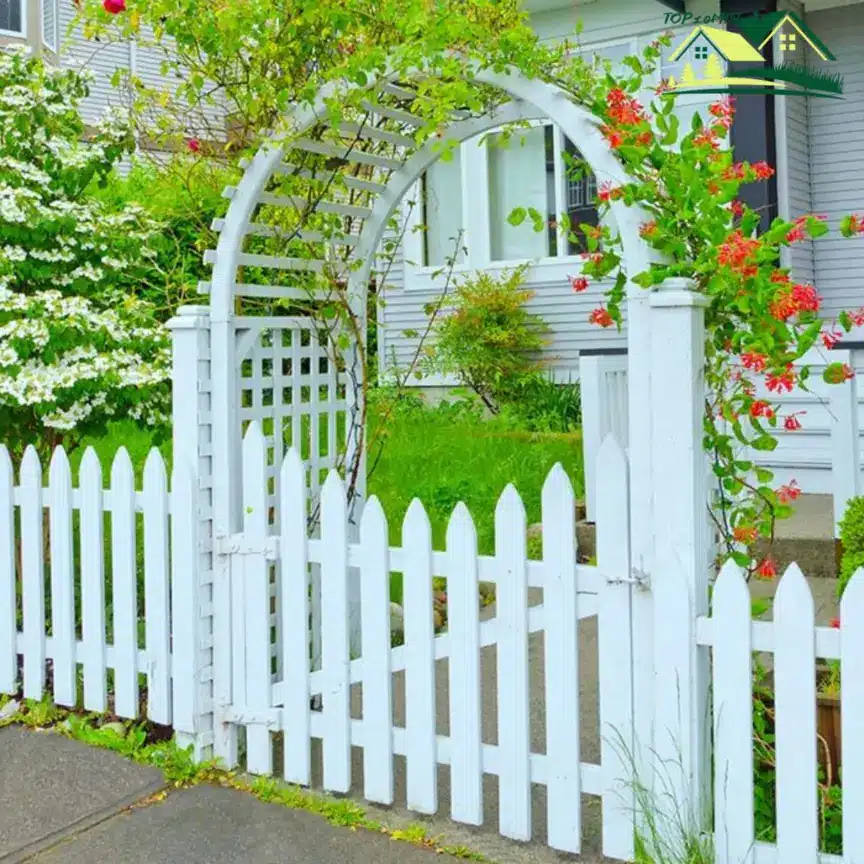
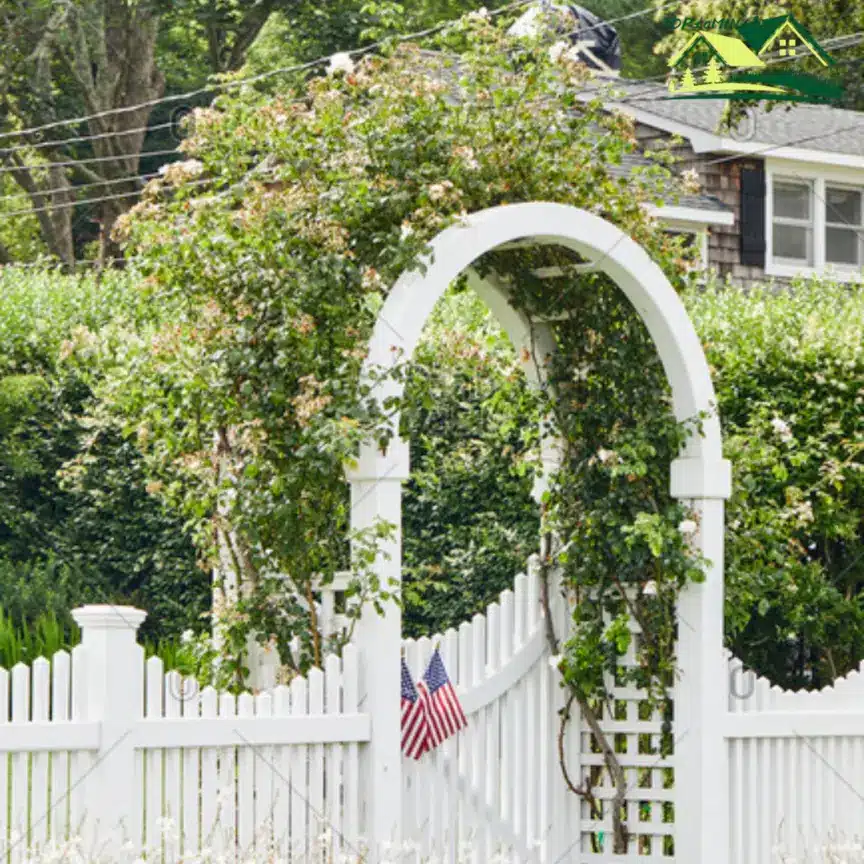
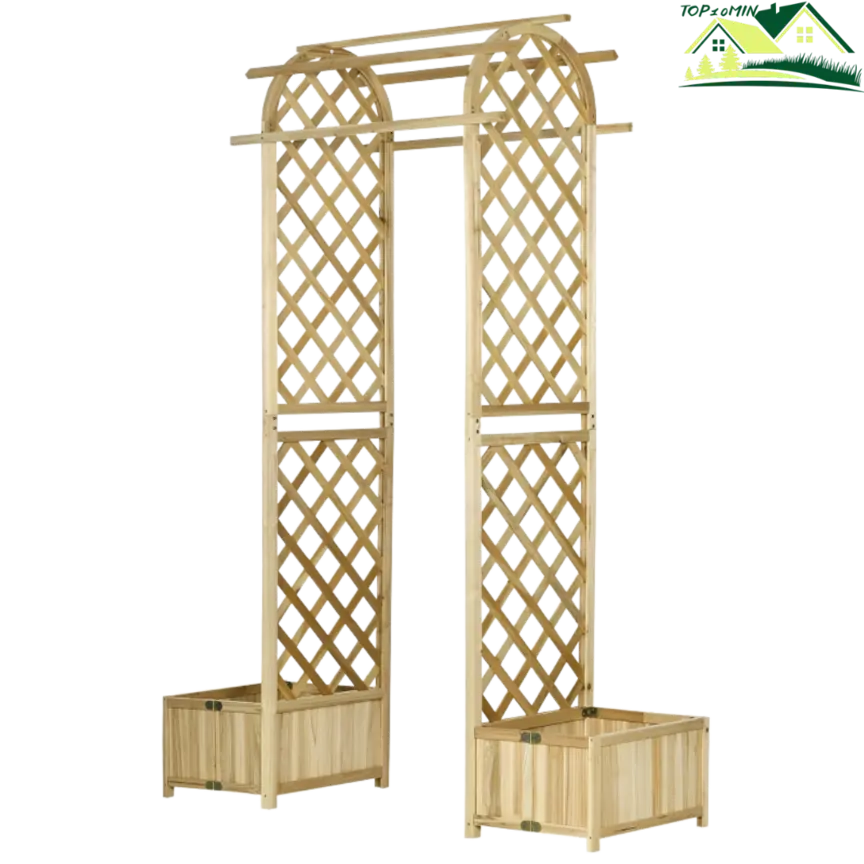
Wooden arched garden trellises exude a timeless, classic charm that adds warmth and natural beauty to any garden setting. Their natural appearance allows these trellises to blend seamlessly into outdoor environments, complementing the surrounding greenery and creating a harmonious ambiance. Crafted from different types of wood, such as cedar, redwood, or pressure-treated pine, these arched structures offer a wide variety of options to suit various styles and preferences. 🌳
1.2 Metal arched garden trellises:
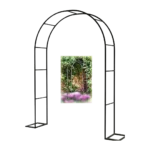
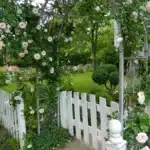
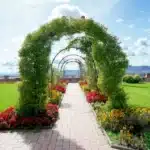


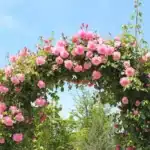
For individuals who desire a combination of durability and modern aesthetics in their garden, metal arched garden trellises provide an exceptional solution. These trellises are constructed using sturdy materials such as wrought iron, aluminum, or galvanized steel, ensuring unmatched strength and longevity. 🔩
1.3 Vinyl arched garden trellises:
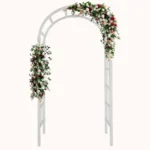
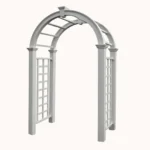
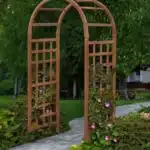
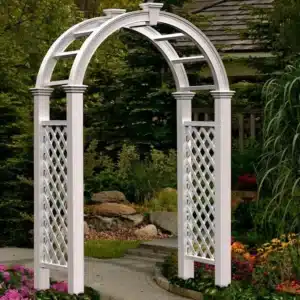
One of the main advantages of vinyl arched garden trellises is that they require very little maintenance. Unlike wooden trellises, which may need to be painted or stained periodically, vinyl trellises keep their vibrant colors and smooth finishes without the need for extensive upkeep. Moreover, their weather-resistant properties shield them from the harmful effects of rain, sun 🌞, and extreme temperatures 🌡️, ensuring that they remain structurally sound and visually appealing for many years. ☔
2) Size and style considerations:
2.1 Matching the trellis size to your garden space and plant needs
The size of the arched trellis should be chosen based on the specific needs of the climbing plants you intend to grow. Some vines may require taller or wider trellises to accommodate their vigorous growth, while others may thrive better on more compact structures. By selecting a trellis size that matches both your garden space and the needs of your plants, you can create a beautiful and functional arrangement that not only looks amazing but also promotes the healthy growth of your plants. 🌳
2.2 Exploring different arched garden trellises styles to complement your garden design
When it comes to selecting the perfect arched garden trellis, it is essential to take the time to explore different arch styles. This will help you find a design that not only enhances the aesthetic appeal of your outdoor space but also reflects your personal taste and garden vision. With a wide range of options available, from classic and timeless arches to more contemporary and whimsical designs, the possibilities are vast.
3) Placement and functionality:
3.1 Ideal locations for arched garden trellises (entryways, pathways, focal points)
Identifying the ideal locations for arched garden trellises is a crucial first step in the selection process. These versatile structures can be strategically placed to frame entryways, line winding garden paths, or serve as the centerpiece of a flower bed or any other landscape feature. 🌿🌼🏡
3.2 Determining the purpose of the trellis (plant support, privacy screen, decorative element)
It’s important to first consider the primary purpose that the trellis will serve. Will it be used primarily for plant support, allowing vines and climbing plants to grow vertically and create a lush, natural canopy? Or will it function as a privacy screen, providing a decorative barrier between your yard and the surrounding area?
By clearly defining the role that your arched garden trellis will play, you can narrow down the vast array of options and select a structure that seamlessly integrates with your existing landscape. This will ensure that it serves as a functional and visually appealing addition to your garden. 🌱
II. Popular climbing plants for arched garden trellises
Flowering Vines:
- Roses, with their classic beauty, are ideal climbers for garden arches. These graceful plants adorn trellises with their cascading blooms. roses thrive when trained over arches. From late spring to mid-summer, they put on a dramatic display, adding elegance and fragrance to your outdoor space.
- Clematis, with its abundant blooms and variety of colors and shapes, is a delightful choice for adorning garden arches. These elegant climbers weave their way through trellises, creating a captivating display. From the delicate bell-shaped flowers of the Clematis montana to the vibrant hues of the Clematis viticella.
- Honeysuckle, with its fragrant flowers, is a delightful choice for adorning garden arches. These sweet-scented climbers attract pollinators(bees, butterflies, and hummingbirds), adding life and movement to your outdoor space. you can choose between the classic Lonicera japonica or the vibrant Lonicera sempervirens, honeysuckle vines thrive in both sun and partial shade.
Fruiting Vines:
- Among the most popular choices for arched garden trellises are grapes 🍇, which not only create a beautiful shaded canopy but also provide the opportunity to harvest delicious homegrown fruit. grapes are an excellent choice as their vigorous growth and trailing habits complement the structure perfectly.
- kiwi 🥝 vine, prized both for its ornamental foliage and delicious edible fruit. Kiwi (Actinidia deliciosa) is a vigorous grower that requires a sturdy trellis. as a climbing plant, the kiwi makes an attractive yet productive addition to the home garden 🏡.
Foliage Vines:
- Ivy : Evergreen 🟢 and providing year-round greenery, ivy is a classic choice. Its trailing leaves soften the arch and create a lush backdrop.
- Virginia Creeper : is ability to rapidly clothe structures in dense greenery makes it an ideal selection for quickly providing shade and visual impact on arched garden trellises.
- Jasminum polyanthum : this evergreen twining climber hails from China and Burma. Its pink flowers are not only fragrant but also stronger in aroma than other jasmine varieties.
Remember to learn how to prune wisteria, as it’s a vigorous climber that can reach up to 30 feet in height. Select a sturdy structure to support the weight of these mature plants, 🌹 🌿 🌸
III. Installing and maintaining your arched garden trellis
Creating an arched trellis is a great way to enhance the height, structure, and vertical growing space in your garden. To ensure a smooth project, it is important to gather all the necessary tools and materials before getting started. 🌱
Step-by-Step installation guide:
- Gathering necessary tools and materials : Basic supplies include sturdy posts or side panels to anchor the archway, weather-resistant wood for the arched top portion, exterior screws and hardware, a power drill, saw, level, measuring tape, and stain or paint if desired. You’ll also need gardening tools like a trowel, shovel, post-hole digger, and tamping tool for properly setting the arched garden trellises in the ground.
- Installation :
- Set the trellis 1 to 2 feet (30 to 60 cm) away from your house. This distance allows easy access to the back of the trellis for pruning and maintenance, as well as proper airflow for the plants.
- Measure the distance between the centers of the trellis’ uprights and mark their positions on the ground.
- Anchor your arch trellis firmly in the ground. consider digging holes and setting the legs in concrete for stability. preferably with the help of at least one other person.
- Fill the remaining space in the post holes with a mixture of soil and gravel.
- Maintenance :
- Regularly inspect your arched garden trellises for signs of wear or damage.
- Prune climbing plants to encourage healthy growth and prevent overgrowth.
- Clean the trellis periodically to remove debris and maintain its appearance.
Plant training and care tips:
Once you have installed an arched trellis or another type of support structure, the next step is to encourage your climbing plants to grow in an attractive and controlled manner, up and over it.
Guiding vines to climb the trellis using ties or supports
Properly training plants using ties or supports is essential for achieving a lush, full covering. By regularly guiding and attaching new vines to a trellis, you can encourage upward growth and prevent unruly expansion along the ground.
To position the vines precisely without harming delicate stems, it is advisable to use soft plant ties, clips, or small trellising netting. 🌱
Pruning and maintaining plant growth for optimal appearance
🌱 One of the key aspects of plant maintenance is pruning and managing growth to optimize the appearance of your greenery.
Pruning and shaping are essential techniques that contribute to the health and vitality of your garden. By selectively removing specific parts of a plant, such as branches or leaves, pruning encourages optimal growth. It eliminates dead or diseased foliage, prevents infections, and enhances nutrient absorption. Shaping, on the other hand, guides a plant’s growth to achieve a desired form, ensuring adequate sunlight penetration and air circulation.
Providing proper watering and fertilization for healthy vines
Maintaining the health and vigor of your vining plants is crucial for their optimal growth and appearance. One of the most important aspects of plant care is ensuring they receive the right balance of water and nutrients. 💧
IV. Design inspiration and creative ideas for arched garden trellises
🌿 One particularly striking trellis design is the arched garden trellises, which can transform a simple garden into a romantic retreat. We will explore a variety of inspirational arched trellis designs and provide creative ideas to help you enhance the aesthetic appeal of your landscape. 🌹
Arched trellises for different garden styles:
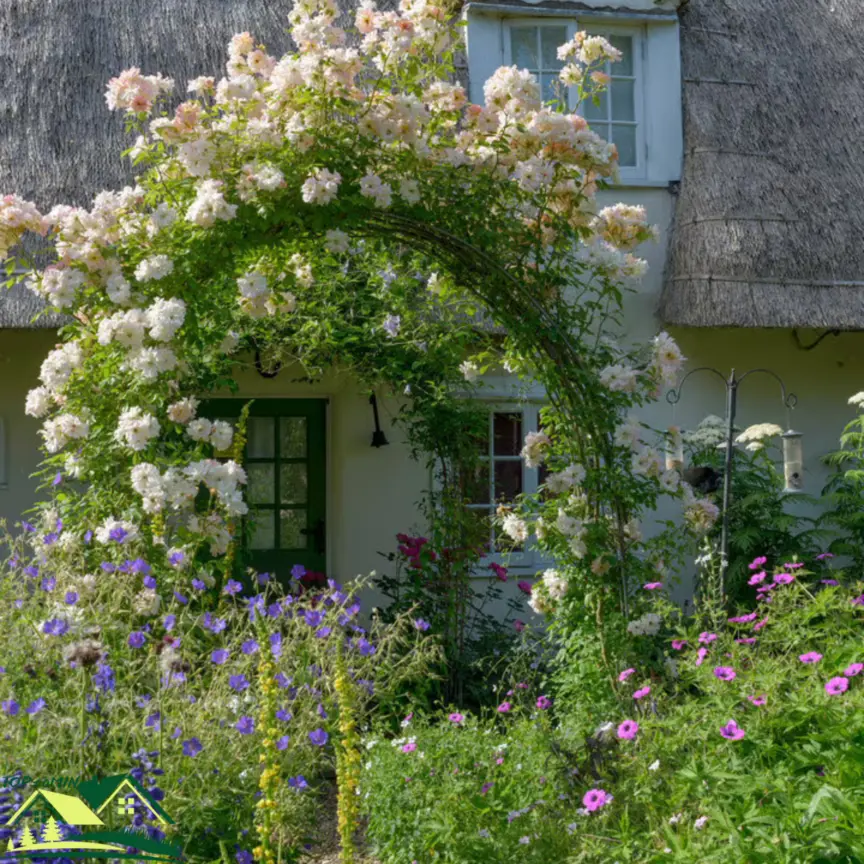
Cottage gardens
🌹 Covered with climbing roses, jasmine plants, and other flowering vines, arched trellises lend a charming atmosphere and a sense of old-world elegance to the cottage-inspired landscape. With the right choice of flowering plants, the arched trellis becomes a stunning centerpiece that embodies the romantic aesthetic of the cottage garden. 🌿
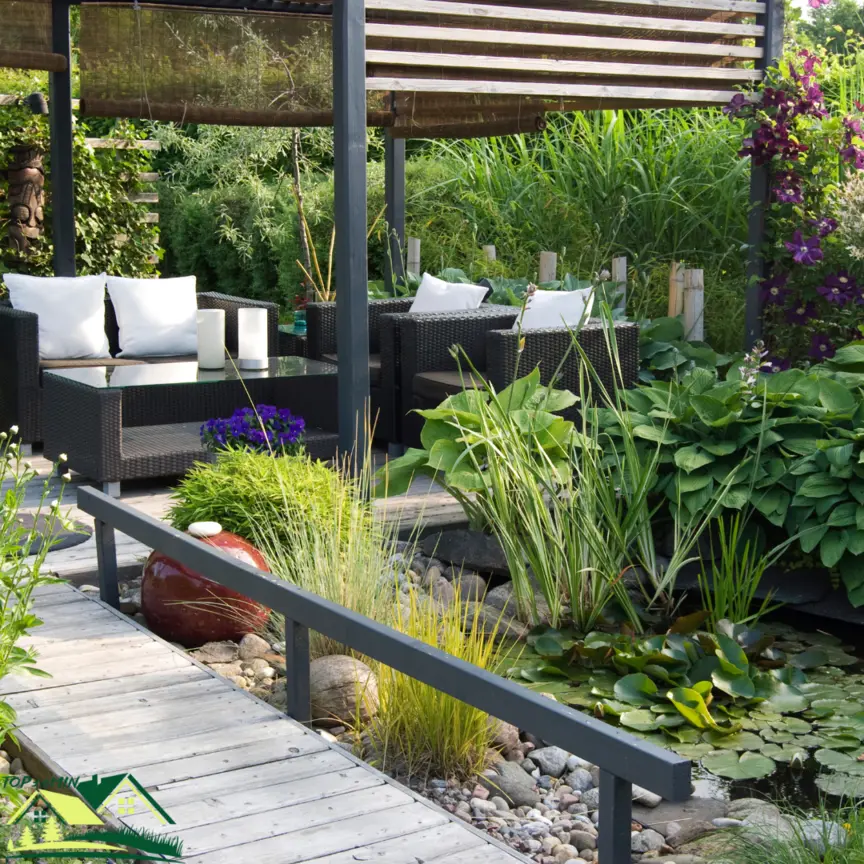
Modern gardens
🌿 In modern gardens, the arched trellis takes on a sleek, architectural form, often made from clean-lined metal. These minimalist arches provide a simple, elegant structure for carefully chosen climbing plants, like evergreen vines or succulents. The restrained, geometric shape of the trellis complements the pared-down plantings, creating a striking visual contrast.
This modern interpretation of the classic garden archway seamlessly integrates with the overall design aesthetic, adding height, structure, and a touch of living greenery to the space.
The arched trellis brings a refined, contemporary sensibility to the modern landscape. 🌱
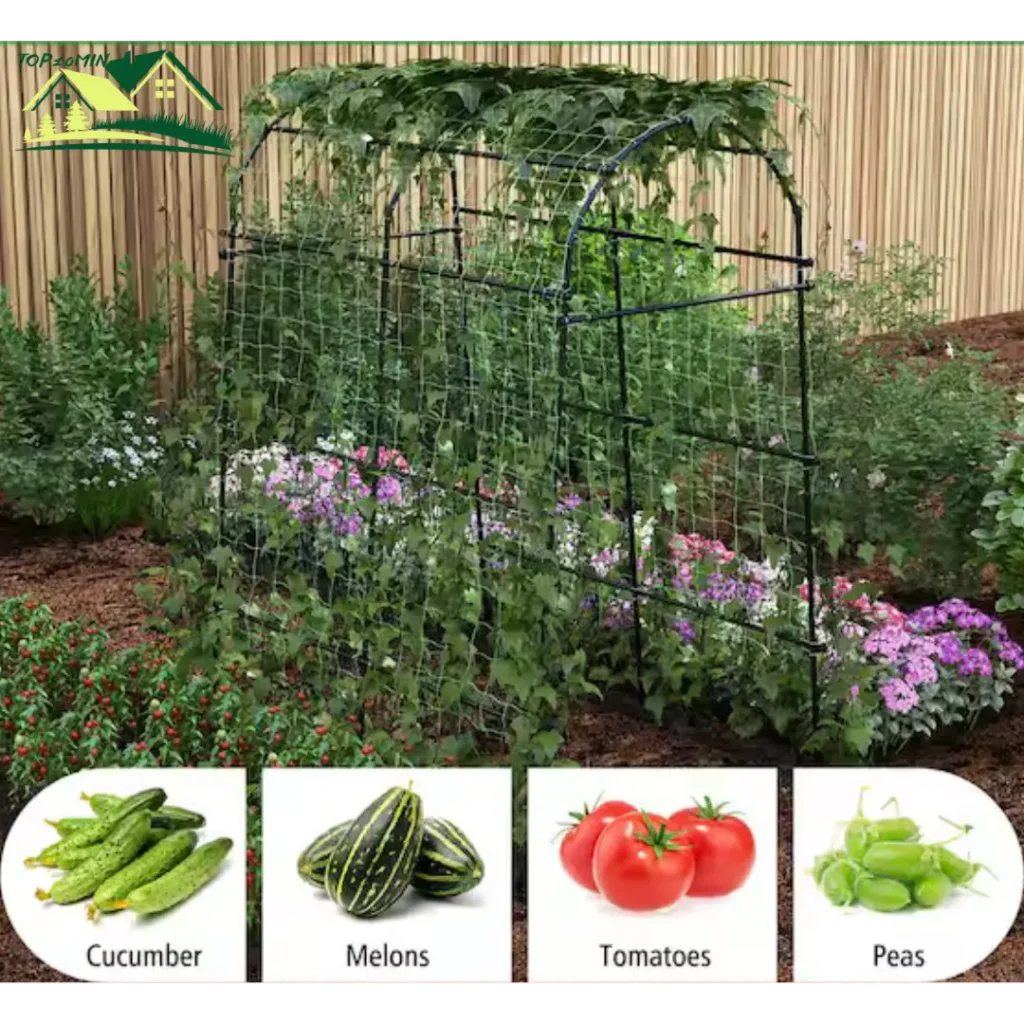
Vegetable gardens
🌱 Arched garden trellises can serve an important practical function in the vegetable garden, in addition to their aesthetic appeal. These structures provide vertical support for climbing crops like beans, cucumbers, or tomatoes, maximizing the use of limited garden space. The curved archway creates a sturdy framework to which these vining vegetables can easily attach and grow, yielding a bountiful harvest from a compact footprint.
Beyond their utility, arched trellises can also add an attractive element to the productive vegetable plot. This dual purpose makes the arched trellis a valuable addition to the functional, yet beautiful vegetable garden design. 🌿
V. Benefits of arched garden trellises:
- Space Optimization: Arched trellises provide vertical support, allowing climbing plants to grow upwards instead of taking up horizontal space, a technique that trains fruit trees to grow in a flat, two-dimensional shape. This can be a beautiful way to maximize space and showcase your fruit trees.
- Increased Yield: Vertical growth promotes better air circulation and sunlight exposure, leading to higher productivity.
- Aesthetic Enhancement: Arched trellises add beauty and elegance to any garden, creating a focal point or a shaded archway for walking through.
- Ease of Maintenance: Climbing plants can be easily accessed and pruned on trellises, making maintenance a breeze.
- Durability: PVC pipes and rebar are long-lasting materials that can withstand weather conditions for years to come.
- Enhanced beauty: A well-balanced garden combines style and functionality, creating a visually appealing space that is both enjoyable and practical.
- Enhanced enjoyment: A garden that is both stylish and functional provides a relaxing and comfortable space for relaxation and leisure.
VI. Tips for Building arched garden trellises
🌿 You can easily create an arched trellis with some inexpensive materials, such as beef panel, leather mesh, and binding wire. The leather mesh comes in different widths, so you can customize it to your desired size. 🌱
Materials needed for arched garden trellises:
- PVC pipes
- Rebar
- Zip ties
- Hog wire or rabbit wire
- Wood strips (optional)
- When building an arched garden trellises , consider the height and width to ensure it fits your desired location.
- Use sturdy materials that can withstand the weight of climbing plants.
- Secure the wires tightly to prevent plants from pulling them loose.
- Choose a design that complements your garden’s style and enhances its functionality.
Arched garden trellises for small gardens
For smaller 🤏 gardens, consider using PVC pipes, rebar, and garden wire. These materials are more flexible and easier to work with, making them suitable for smaller spaces. Tie the wire around the PVC pipes and rebar to create a secure frame.
Adding ornamentation to arched trellises
While some prefer a more natural look, you can add decorative touches to your arched trellises. By incorporating intricate designs or using different colored wire, you can enhance the aesthetic appeal of your garden 🏞️.
VII. Conclusion: Transform your garden with arched trellis magic
🌼 Let’s remember that arched garden trellises are like little architectural jewels for your garden. They add drama, provide vertical space for growth, and can be topped with a series of beautiful flowers or vibrant greenery. 😊
And the best part? They’re incredibly versatile. You have the option building your own budget-friendly version or opt for a pre-made arch, there’s an option for every style and size of garden. 🌱🌿
🌿 And let’s not forget the opportunities to train different vining plants, such as clematis, wisteria, or even vegetables like cucumbers, to create living works of art. 🎨
So, I encourage you to explore the wonderful world of Arched garden trellises. Experiment with different materials, shapes, and plant combinations to create a unique garden feature that reflects your style. Who knows, you might even inspire your neighbors with your arched trellis masterpiece. 🌼
I would love for you to share your arched trellis creations with me and the community! If you have any questions about selecting the right trellis or plant pairings, feel free to ask. Happy gardening! 🌱
VIII. FAQs: Arched garden trellises
Do arched trellises require much maintenance ?
Maintenance needs depend on the trellis material. Wood may require occasional staining or sealing, while metal may need rust treatment. Regularly check for loose connections and prune your climbing plants to prevent overgrowth.
Can I build my own arched trellis ?
Absolutely! I have discussed this topic in the article.
Building your own arched trellis is a fun and rewarding project. With a few basic carpentry skills and the correct materials, you can create a personalized trellis that perfectly complements the dimensions and aesthetics of your garden.
What are the best plants to grow on an arched garden trellises ?
The options are endless when it comes to choosing climbing plants for your arched garden trellis. Some of the most popular and versatile choices include grapes, wisteria, morning glories, honeysuckle, and climbing roses. These plants thrive when trained to grow up and over the arched structure, creating a lush and vertical display.
How do I keep an arched garden trellises from blowing over ?
Securing your arched garden trellis is essential to prevent it from toppling over, especially in windy conditions. Be sure to anchor the structure firmly in the ground, either by sinking the legs into deep holes filled with concrete or attaching it to a sturdy base. You can also use guy wires or additional bracing to provide extra stability.
How far apart should Arched garden trellises be spaced ?
The spacing depends on the specific design, but most guidelines recommend a spacing of about 6-8 feet between arched trellises. This allows for the creation of distinct garden 🏞️ rooms while providing enough space to move between them.
What if I’m not handy or short on time ?
No worries! Many garden centers and online retailers sell beautiful pre-made arched trellises in various materials.
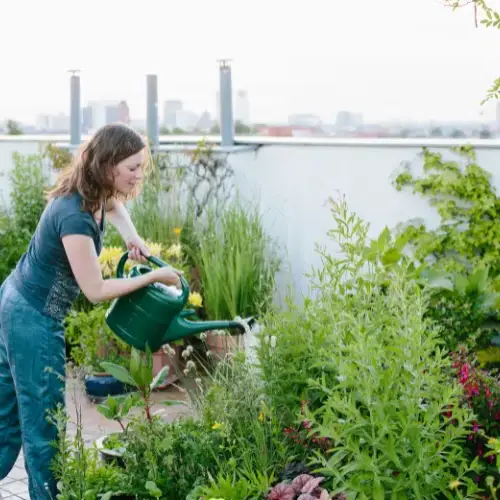
About the Author
As a woman expert in sustainable, environmental, and natural farming methods.
I write about houseplant care sharing tips and tricks i’ve learned over the years to help keep your plants happy and healthy.



